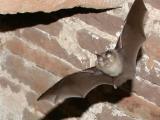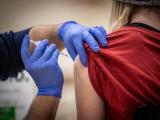Aug 13, 2012 (CIDRAP News) – Faced with a dramatic rise in West Nile virus illnesses and deaths and following medical advice, Dallas County, Tex., officials recently approved the use of aerial spraying for the first time in decades to control mosquito populations.
Aerial spraying, one of the most potent tools public health officials have to battle disease-carrying mosquitoes, hasn't been used in the Dallas area since 1966. Many residents oppose aerial spraying, out of fear that the chemicals could harm humans, pets, produce, and insect populations that don't cause diseases.
Other parts of the nation, such as Boston suburbs and counties in California, have aerial spraying events scheduled to battle the summertime rise in mosquitoes and the diseases they transmit.
Dallas County and surrounding areas are leading the nation this summer in the number of WNV illnesses. On Aug 8, the Dallas County Department of Health and Human Services (DCHHS) announced its ninth death from WNV, in a patient who had been diagnosed with the neuroinvasive form of the disease. So far, 175 WNV infections have been reported in the county, according to the department's Aug 9 update. The county declared a public health emergency over WNV the same day.
The big spike in cases prompted the Dallas County Medical Society (DCMS) Community Emergency Response Committee on Aug 6 to unanimously recommend immediate aerial spraying, and it offered county health officials its assistance with communicating the need to department leaders and elected officials in the area.
In its letter to the DCDHHS, the medical society said the WNV outbreak in the Dallas area is a once-in-50-years medical event that rivals a 1966 outbreak of St. Louis encephalitis in Dallas that resulted in 168infections and 16 deaths.
While the society commended county officials for requesting more resources for larvicides and ground-based spraying, the severity of the outbreak means there are areas of intense activity that haven't responded to conventional efforts. It suggested that aerial spraying could be targeted to areas with the highest viral activity in mosquitoes and humans, especially northern Dallas County.
The DCMS said aerial spraying in the 1966 St. Louis encephalitis epidemic dropped the mosquito infection rate from 1 in 150 to less than 1 in50,000. "We think that the time to act is now and that delaying consideration of stronger aerial control measures will only lead to more tragic cases of severe illnesses," the group wrote, adding that the public health risk of WNV clearly exceeds the risk from insecticide exposure.
"The economic cost of aerial spraying needs to be compared to the cost of the continued loss of lives, continued medical intensive care admissions, and the debilitating loss of function that the anticipated numbers of WNV victims encephalitis will suffer from this outbreak," the letter stated.
After declaring the public health emergency for WNV, county, state, and other officials met on Aug 10 to discuss disease control options, according to an Aug 10 Associated Press (AP) story. Afterward Dallas County Judge Clay Jenkins, who directs Dallas County's Homeland Security and Emergency Management department, announced that state planes would be requested to spray the northern part of Dallas, if the city of Dallas and surrounding municipalities request them, the story said.
Meanwhile, public health departments in other parts of the country are using aerial spraying this week to battle mosquito-borne illness outbreaks.
Weather permitting, Massachusetts officials will spray for mosquitoes tonight in six southeastern towns: Bridgewater, Easton, Norton, Raynham, Taunton, and West Bridgewater, according to a statement from the Massachusetts Department of Health and Human Services. (MDHHS). The spraying plan was sparked by numerous recent detections of mosquito pools that are positive for Eastern equine encephalitis (EEE). Officials recently raised the risk level from high to critical in four of the towns.
The state conducted an initial round of aerial spraying in late July, which reduced mosquito populations by 60%, but not enough to curb the public health threat. So far no human WNV or EEE cases have been detected in the area. In addition, health officials in some of the affected areas have taken other prevention steps, including postponing or curbing evening outdoor activities, the Boston Globe reported yesterday.
Officials in California's San Joaquin County will also conduct aerial spraying for mosquitoes tonight, weather permitting, because of an increase in the adult mosquito population and detection of WNV in several areas, according to an Aug 10 statement from the county. Aerial spraying is also planned for other California locations this week, including agricultural areas of Yolo County, the Sacramento Bee reported.
See also:
Aug 10 AP story
Aug 8 DCDHHS statement
Aug 9 DCDHHS statement
Aug 5 DCMS statement
MDHHS aerial spraying information
Aug 7 MDHHS statement
Aug 12 Boston Globe story
Aug 12 Sacramento Bee story




















